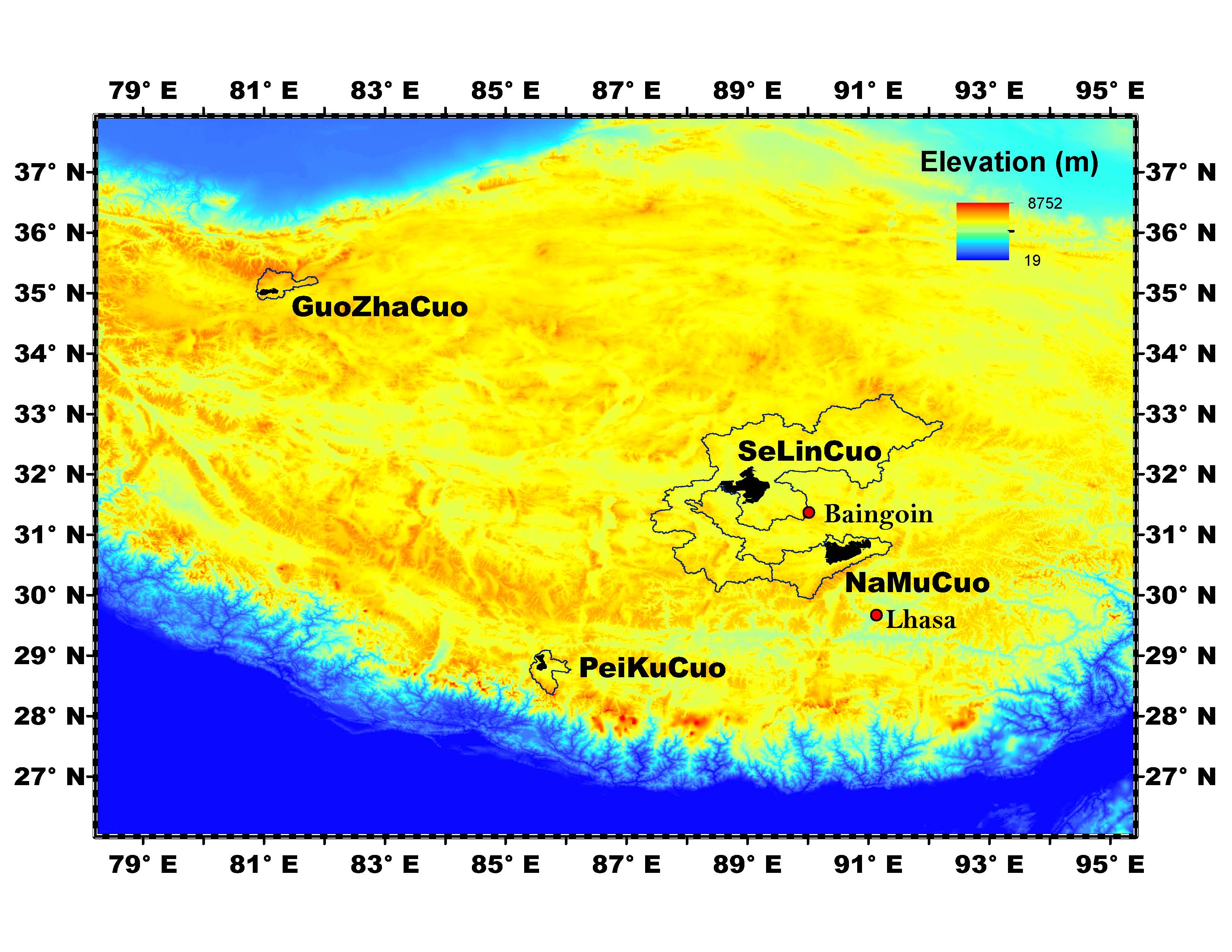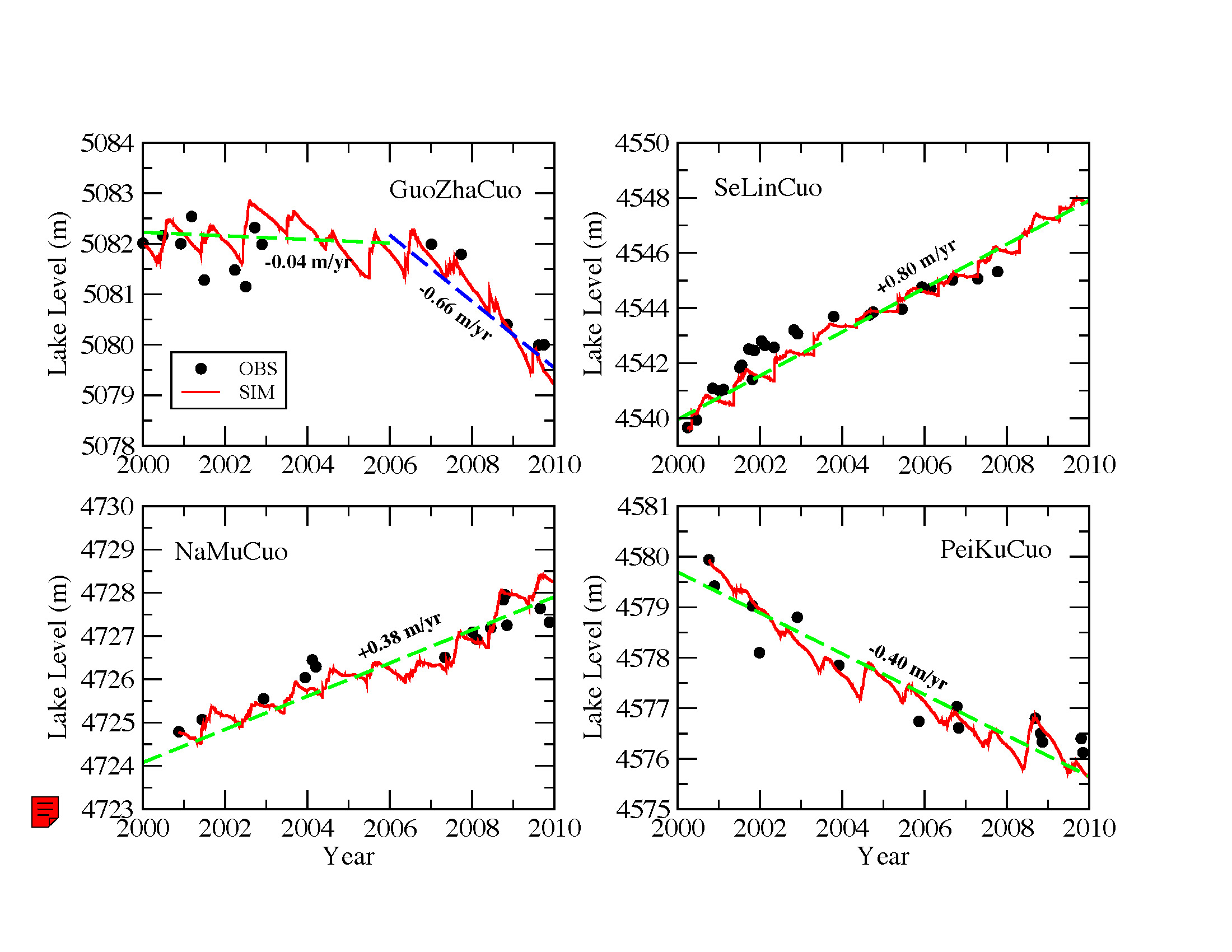The impacts of climate change on the Tibetan lakes
Climate warming and global change caused glacier retreat and resulted in the lake level rising in the Tibetan lakes, while higher temperatures amplified evaporation from the lakes and resulted in the lake level declining. Some studies suggested that the lake levels of some large Tibetan lakes rose, while in the small-sized lakes water levels dropped. Through employing the Landsat observations and numerical simulations, we found that the lake size plays a less important role in controlling lake level changes in the Tibetan lakes during 2000-2009. In addition to changes in precipitation and temperature, the groundwater flow regime in the Tibetan Plateau has changed and such change is one dominant factor controlling the lake level variations in the Tibetan lakes. If the net groundwater flow is negligible, precipitation and evaporation dictate the water level variations in the Tibetan lakes. For the lakes with a net groundwater inflow, the lake level is rising, and the rising rate is elevated by increase in precipitation and reduced by increase in evaporation. For the lakes with a net groundwater outflow the lake level is dropping, and the decline rate is intensified by decrease in precipitation and increase in evaporation. The degradation of the permafrost and increase in the active layer thickness in the Tibetan Plateau due to rising temperatures may be a direct cause for the change of the groundwater flow regime (e.g., change from the local groundwater regime to the regional groundwater flow regime) in this region.


- Pan F., Liao J., Li X., and Guo H., 2013: Application of the inundation area-lake level rating curves
constructed from the SRTM DEM to retrieving lake levels from satellite measured inundation areas.
Computers and Geosciences 52, 168-176.
(Link)
|

